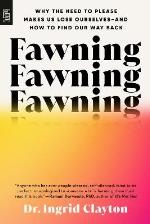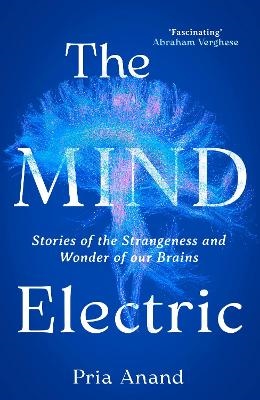Engelska
Mest sålda
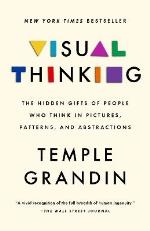
-
Title:
Visual Thinking
-
Reviews:
-
Release Date:
-
Genre:
- Psykologi
-
Format:
Bok
-
Availability:
Beställningsvara Leveranstid: från 14 vardagar
-
Description:
"A powerful and provocative testament to the diverse coalition of minds we'll need to face the mounting challenges of the twenty-first century." -Steve Silberman "An absolute eye-opener." -Frans de Waal A landmark book that reveals, celebrates, and advocates for the special minds and contributions ...
Visual Thinking Bok
"A powerful and provocative testament to the diverse coalition of minds we'll need to face the mounting challenges of the twenty-first century." -Steve Silberman <br/><br/>"An absolute eye-opener." -Frans de Waal <br/><br/>A landmark book that reveals, celebrates, and advocates for the special minds and contributions of visual thinkers<br/><br/>A quarter of a century after her memoir, Thinking in Pictures, forever changed how the world understood autism, Temple Grandin- "an anthropologist on Mars," as Oliver Sacks dubbed her-transforms our awareness of the different ways our brains are wired. Do you have a keen sense of direction, a love of puzzles, the ability to assemble furniture without crying? You are likely a visual thinker.<br/><br/>With her genius for demystifying science, Grandin draws on cutting-edge research to take us inside visual thinking. Visual thinkers constitute a far greater proportion of the population than previously believed, she reveals, and a more varied one, from the photo-realistic "object visualizers" like Grandin herself, with their intuitive knack for design and problem solving, to the abstract, mathematically inclined "visual spatial" thinkers who excel in pattern recognition and systemic thinking. She also makes us understand how a world increasingly geared to the verbal tends to sideline visual thinkers, screening them out at school and passing over them in the workplace. Rather than continuing to waste their singular gifts, driving a collective loss in productivity and innovation, Grandin proposes new approaches to educating, parenting, employing, and collaborating with visual thinkers. In a highly competitive world, this important book helps us see, we need every mind on board.
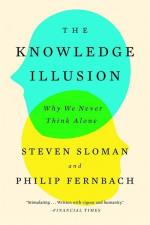
-
Title:
The Knowledge Illusion
-
Reviews:
-
Release Date:
-
Genre:
- Psykologi
-
Format:
Bok
-
Availability:
Beställningsvara Leveranstid: från 14 vardagar
-
Description:
Humans have built hugely complex societies and technologies, but most of us don't even know how a pen or a toilet works. How have we achieved so much despite understanding so little? Cognitive scientists Steven Sloman and Philip Fernbach argue that we survive and thrive despite our mental shortcomi...
The Knowledge Illusion Bok
Humans have built hugely complex societies and technologies, but most of us don't even know how a pen or a toilet works. How have we achieved so much despite understanding so little? Cognitive scientists Steven Sloman and Philip Fernbach argue that we survive and thrive despite our mental shortcomings because we live in a rich community of knowledge. The key to our intelligence lies in the people and things around us. We're constantly drawing on information and expertise stored outside our heads: in our bodies, our environment, our possessions, and the community with which we interact-and usually we don't even realize we're doing it.<br/><br/>The human mind is both brilliant and pathetic. We have mastered fire, created democratic institutions, stood on the moon, and sequenced our genome. And yet each of us is error prone, sometimes irrational, and often ignorant. The fundamentally communal nature of intelligence and knowledge explains why we often assume we know more than we really do, why political opinions and false beliefs are so hard to change, and why individual-oriented approaches to education and management frequently fail. But our collaborative minds also enable us to do amazing things. <i>The Knowledge Illusion</i> contends that true genius can be found in the ways we create intelligence using the community around us.
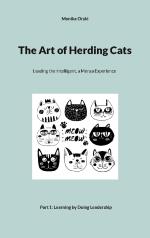
-
Title:
The Art Of Herding Cats - 1. Learning By Doing Leadership
-
Reviews:
-
Release Date:
-
Genre:
- Psykologi
-
Format:
Bok
-
Availability:
Beställningsvara Leveranstid: från 14 vardagar
-
Description:
Leading highly intelligent individuals can be both an immensely rewarding and challenging experience. When those individuals are also volunteers, the complexity of leadership increases even more. In this thought-provoking book, a former national chair of Mensa Sweden shares valuable insights and pr...
The Art Of Herding Cats - 1. Learning By Doing Leadership Bok
Leading highly intelligent individuals can be both an immensely rewarding and challenging experience. When those individuals are also volunteers, the complexity of leadership increases even more.<br/><br/> In this thought-provoking book, a former national chair of Mensa Sweden shares valuable insights and practical lessons drawn from years of experience leading within one of the world's most intellectually gifted communities. With Mensa being a largely volunteer-driven organization, it offers a rare environment to explore leadership in its most nuanced and challenging form, also know as herding cats.<br/><br/> You will learn about leadership by sugar, explanations adapted for the fast thinkers, and how a character from a children's book can help. Plus some other things you might not yet know that you want to know. There are even some attempts at humour.<br/><br/> Ideal for leaders, managers, and anyone working with high-performing or highly autonomous teams of professionals or volunteers, The Art of Herding Cats guides you through doing the mostly impossible and how to enjoy it.

-
Title:
Reflecting, Refracting, And Resituating Dabrowski's Theory O
-
Reviews:
-
Release Date:
-
Genre:
- Psykologi
-
Format:
Bok
-
Availability:
Beställningsvara Leveranstid: från 14 vardagar
-
Description:
REFLECTING, REFRACTING, AND RESITUATING DABROWSKI'S THEORY OF PERSONALITY aims to accomplish three objectives: to make a complex theory more accessible to readers, to situate the theory in its proper academic home, and to comply with Dabrowski's request to refine his creation. To accomplish the fir...
Reflecting, Refracting, And Resituating Dabrowski's Theory O Bok
REFLECTING, REFRACTING, AND RESITUATING DABROWSKI'S THEORY OF PERSONALITY aims to accomplish three objectives: to make a complex theory more accessible to readers, to situate the theory in its proper academic home, and to comply with Dabrowski's request to refine his creation. To accomplish the first objective, the book describes clearly Dabrowskian concepts and illustrates them using tables and figures. The author's description of his personal experiences with Dabrowski's ideas contributes to the ease of readers' understanding the theory. To accomplish the second objective, the meanings of the concepts in the theory of positive disintegration are compared and contrasted to their definitions in traditional psychology. To accomplish the third objective recommendations for refinement of the theory are made, where appropriate, as requested in Dabrowski's written invitation for interested parties to build on the theory of positive disintegration. The book contains four parts. Part I, The Theory and Me, addresses fundamental issues of the theory. Chapter 1 presents various perceptions of the theory. Chapter 2 includes the set of selected constructs with which this book is concerned. Chapter 3 contrasts psychological constructs, integral to the author's scholarly and psychotherapeutic work, with their depictions in the theory of positive disintegration. Chapter 4 explains a central proposition in D¹browski's theory: that negative emotions, under certain conditions, are signs of personal growth. Part II, Dabrowskian Development, deals with the conceptualization of development in the theory. Chapter 5 discusses Dabrowski's five levels of development, describing the progression from primitive to exemplary human functioning. Chapters 6 and 7 examine dynamisms that are the forces of development and their emergence in daily living. Chapter 6 discusses disintegrating dynamisms, responsible for the destruction of primitive, self-centered modes of living. Chapter 7 presents the developmental dynamisms, signifying advanced, morally-driven modes of living. Part III, D¹browskian Constructs in Context, examines some central constructs of the theory in a broader psychological context. Chapter 8 contrasts D¹browski's conception of self with self-concept. Chapter 9 contrasts established theories of intelligence with D¹browski's view of intelligence. Chapter 10 compares Dabrowski's hierarchy of values, a concept equated with advanced development, with a social psychological theory of values. Chapter 11 compares D¹browski's view of mental health with prevalent current conceptions. Part IV offers concluding reflections on the theory of positive disintegration. Chapter 12 is a consolidation of commentary appearing in previous chapters, culminating with several suggestions for modification and elaboration of the theory.

-
Title:
Marte Meo And Coordination Meetings - Mac
-
Reviews:
-
Release Date:
-
Genre:
- Psykologi
-
Format:
Bok
-
Availability:
Beställningsvara Leveranstid: från 3 vardagar
-
Description:
In the early 1990s two sets of experiences coincided and eventually resulted in the development of Marte Meo and Co-ordination Meetings (MAC). The first concerned my experience of inter-agency effectiveness in Sweden. In my work as an external supervisor and trainer in my hometown I often came acro...
Marte Meo And Coordination Meetings - Mac Bok
In the early 1990s two sets of experiences coincided and eventually resulted in the development of Marte Meo and Co-ordination Meetings (MAC). The first concerned my experience of inter-agency effectiveness in Sweden. In my work as an external supervisor and trainer in my hometown I often came across the same children, but in different professional contexts. They and their families had been referred to different agencies and the reason for the referral was often a teacher who expressed her concern about the child s development. The school often described these children as having interaction and learning problems. It was also common that the agencies to whom the children were referred the Social Services, Child Guidance Clinics, agencies for children with special needs etc. did not share the school s definition of the problem. This was sometimes true even for the child s parents. However, the general consensus from the professionals was that the family should receive some form of help, and that this work would then (hopefully) result in the child performing better in school. It could also be that the different agencies disagreed in their evaluation of the seriousness of the child s problem or whose responsibility it was to help. More than once I witnessed schools and other agencies criticise each other, each of them often questioning the way in which the other defined and carried out their professional responsibilities. This kind of experience strengthened the conviction that there must surely be a fairly simple and practical way for the agencies created by society in order to protect and ensure children s safety and development to co-operate more effectively, and use their resources and knowledge in a more co-ordinated fashion. Another clearly observed pattern was that when the parents of the child did not share the professional s view of the child s need for support, the resulting conflict often stopped the child from receiving any kind of support. A short history 0-titel-innehall-x.indd 7 2013-02-11 19.01 8 The second was coming into contact with and learning the videobased model named Marte Meo. I helped introduce Marte Meo into Sweden in the late eighties and although at that time nothing was known (more than anecdotal evidence) regarding the effectiveness of the model, it quickly became apparent that there was a great deal of interest to implement it in different professional settings. A colleague and friend Professor Kjell Hansson constantly reminded me about the lack of evidence, and in particular what he said was my lack of responsibility in introducing a model whose effectiveness was unknown. His friendly pressure was very helpful, and the decision was made to research the model and its effectiveness. These two sets of experiences were the starting point of what later became MAC. One of the core ideas that form the foundation of MAC is that the child can be offered help in that context where her problem is first observed and identified in this case, the school. In practice, this means that when the school seeks contact with parents, it is to ask for their consent so that the teacher can get extra help in the classroom to better support their child. Succeeding experience has shown that few parent turns down this offer. In the early stages of planning a pilot-project it became apparent that some kind of social construction a story or narrative that could be accepted by all parts was needed to keep the system of school and parents co-ordinated, and create a co-operative frame. Such a frame would help elicit the parents blessing in the school s attempt to support their children, and offer the school a rationale that would justify the extra expenditure of time and energy in the classroom. The idea of how this should happen in practice was initially rather foggy, and it proved to be a stroke of luck to invite psychologist Ulf Axberg, Ph. D. to help with the creation of this part of the project. He brought both theoretical and practical clarity with him, and researched the work, and eventually wrote his doctoral dissertation on the project. Kjell Hansson has continued to offer his invaluable collaboration during MAC s development over time, as well as to the ongoing research designed to determine its effectiveness. He has been a constant discussion partner and has given constructive feedback throughout the writing process. Ingegerd Wirtberg

-
Title:
The Laws Of Human Nature
-
Reviews:
-
Release Date:
-
Genre:
- Psykologi
-
Format:
Bok
-
Availability:
Beställningsvara Leveranstid: från 14 vardagar
-
Description:
Robert Greene is a master guide for millions of readers, distilling ancient wisdom and philosophy into essential texts for seekers of power, understanding and mastery. Now he turns to the most important subject of all - understanding people's drives and motivations, even when they are unconsci...
The Laws Of Human Nature Bok
Robert Greene is a master guide for millions of readers, distilling ancient wisdom and philosophy into essential texts for seekers of power, understanding and mastery. Now he turns to the most important subject of all - understanding people's drives and motivations, even when they are unconscious of them themselves. We are social animals. Our very lives depend on our relationships with people. Knowing why people do what they do is the most important tool we can possess, without which our other talents can only take us so far. Drawing from the ideas and examples of Pericles, Queen Elizabeth I, Martin Luther King Jr, and many others, Greene teaches us how to detach ourselves from our own emotions and master self-control, how to develop the empathy that leads to insight, how to look behind people's masks, and how to resist conformity to develop your singular sense of purpose. Whether at work, in relationships, or in shaping the world around you, The Laws of Human Nature offers brilliant tactics for success, self-improvement, and self-defence.
Utvalt - Engelska
The Mind Electric
'Reminiscent of Oliver Sacks and the best of medical writing. Fascinating' Abraham Verghese'A rich and humane work' Gwen Adshead, author of The Devil You Know A young woman channelling the voice of t...
- Populärt
- Mest sålda
- Mest bokade
- Senast släppta
- Kommande
- Pris
- A-Ö
- Välj
- 0 - 9
- A
- B
- C
- D
- E
- F
- G
- H
- I
- J
- K
- L
- M
- N
- O
- P
- Q
- R
- S
- T
- U
- V
- W
- X
- Y
- Z
- Å
- Ä
- Ö
- Övrigt

